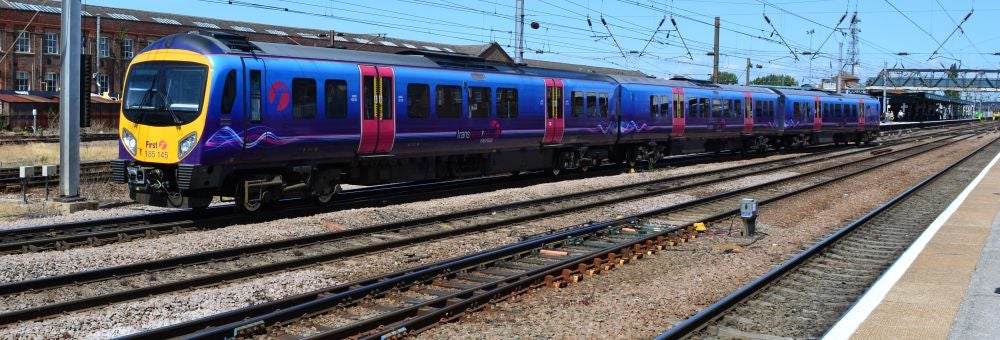 "Cé hé sin" (michael-m-mouse)
"Cé hé sin" (michael-m-mouse)
10/19/2016 at 18:59 • Filed to: Voith, DMU, Class 185, Trainlopnik
 3
3
 10
10
 "Cé hé sin" (michael-m-mouse)
"Cé hé sin" (michael-m-mouse)
10/19/2016 at 18:59 • Filed to: Voith, DMU, Class 185, Trainlopnik |  3 3
|  10 10 |
Meet a Class 185 train as used on British railways.

Yes, it’s just a train. It’s a DMU, a diesel multiple unit, one of those commuter-type ones where each carriage has an engine under it so it’s like a collection of buses on rails.
Some DMUs are diesel electric where the engine pumps electrons with sufficient force that they will make the wheels go round. Not this one though. It therefore needs a transmission of some kind (or indeed three of them in this case) and given the weight and how often it has to be stopped and started it’s not going to have clutches. You’d expect then some kind of automatic transmission and you’d be right. A Class 185 train has Voith !!!error: Indecipherable SUB-paragraph formatting!!! transmissions which have three speeds, just not as we know them from road vehicles.
First gear involves a torque converter and reduction gearing. So far so normal. Changing up to second though is less so.. The torque converter is drained of fluid, putting it out of action, and in its place a !!!error: Indecipherable SUB-paragraph formatting!!! is filled. This drives a somewhat higher gear. Once you’re done with second the next step is (yes, you’ve guessed it) drain the second gear coupling and fill the third gear one. Having got to operating speed you will need to stop again shortly thereafter and the transmission then serves as a retarder and saves wear on the brakes. What you don’t get is a built in reverse., because trains have to make the return journey without actually turning around, and so there’s a separate reversing unit.
Why all this complication? Because there are no friction materials to wear and you get seamless gearchanges.
So there you have it. Changing gear by adding and subtracting fluid.
On a linguistic note, Voith is pronounced Foyt and is the origin of that name.
 Berang
> Cé hé sin
Berang
> Cé hé sin
10/19/2016 at 19:18 |
|
I’m pretty sure England is the only country that has a tradition of using diesel-hydraulic units.
 Mondial goes to 11
> Cé hé sin
Mondial goes to 11
> Cé hé sin
10/19/2016 at 20:32 |
|
This is the first time I’ve ever heard DMUs, let alone one with a hydraulic transmission. Apparently coupler strength regulations prevent them from taking off in the US. I thought diesel-hydraulics were all but dead in rail applications.
 Mondial goes to 11
> Berang
Mondial goes to 11
> Berang
10/19/2016 at 20:38 |
|
I believe Germany also has a history with it’s Krauss-Maffei diesel-hydraulics, but I don’t know much about European rail.
 bhtooefr
> Mondial goes to 11
bhtooefr
> Mondial goes to 11
10/19/2016 at 21:47 |
|
Actually, a lot of the problem is crash safety regulations - to interoperate with cargo rail, a DMU has to be built to crash with heavy cargo trains, or huge separation between light and heavy traffic has to be included.
 Mondial goes to 11
> bhtooefr
Mondial goes to 11
> bhtooefr
10/19/2016 at 23:19 |
|
Thanks for the clarification. That makes much more sense.
 bhtooefr
> Berang
bhtooefr
> Berang
10/19/2016 at 23:46 |
|
Japan’s also got some diesel-hydraulics.
 Chinny Raccoon
> Mondial goes to 11
Chinny Raccoon
> Mondial goes to 11
10/20/2016 at 03:06 |
|
We also have
Railbusses
, that are even lighter.
 Cé hé sin
> Berang
Cé hé sin
> Berang
10/20/2016 at 04:48 |
|
There are plenty of them around. The one I showed is by Siemens, not a company I associate with things not powered by or with electrons, and they got tenders from companies in Spain and France as well, which would suggest that at least three other countries use them.
 Cé hé sin
> Chinny Raccoon
Cé hé sin
> Chinny Raccoon
10/20/2016 at 05:04 |
|
Cute.
 Cé hé sin
> Mondial goes to 11
Cé hé sin
> Mondial goes to 11
10/20/2016 at 05:16 |
|
No, Voith still make hydraulic transmissions and several train makers use them.
This one
for example, which offers every kind of traction you could think of - electric, electric and diesel, diesel electric, diesel hydraulic (the one described above)and diesel mechanical (conventional torque converter gearbox, usually a ZF bus one).